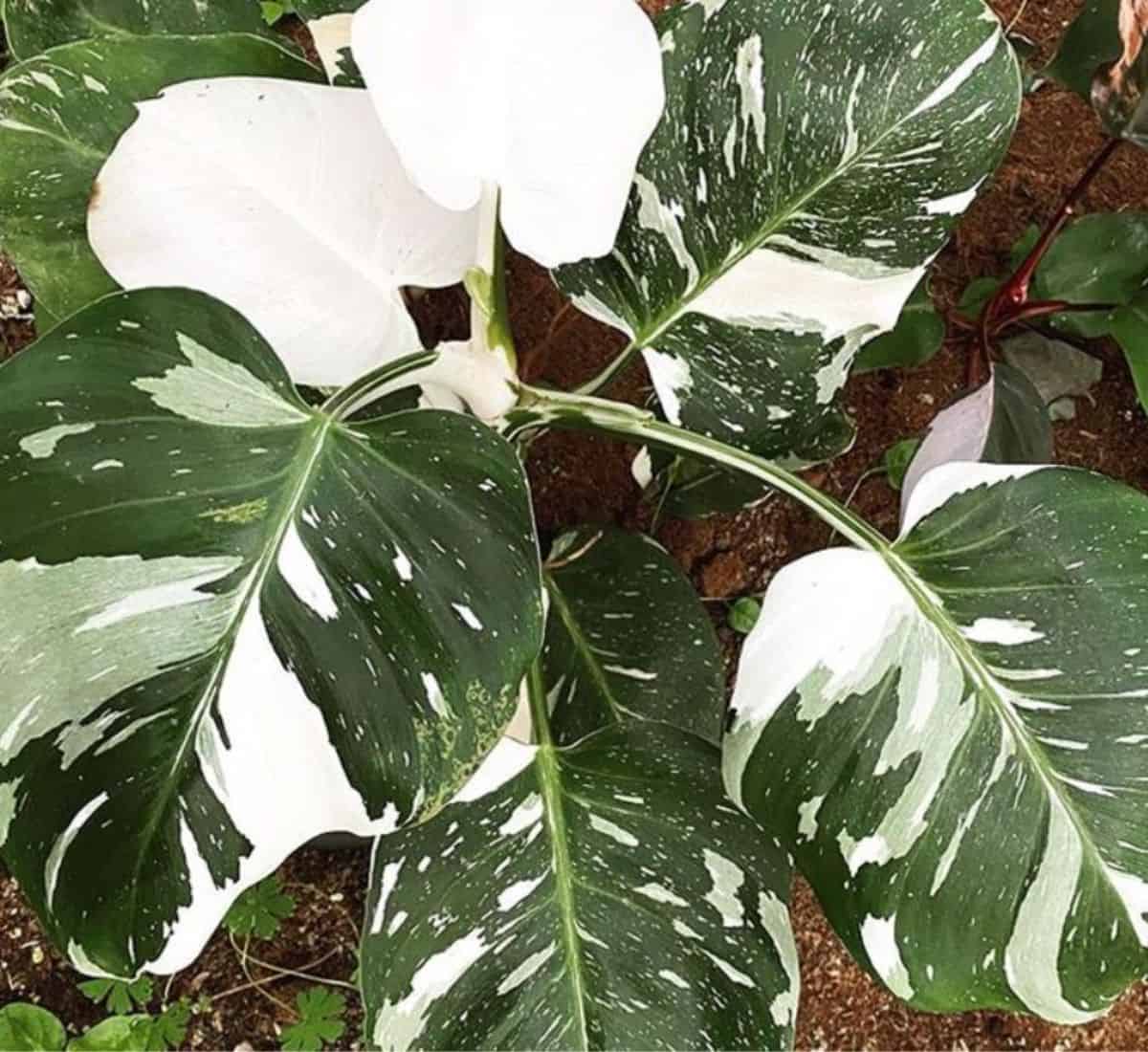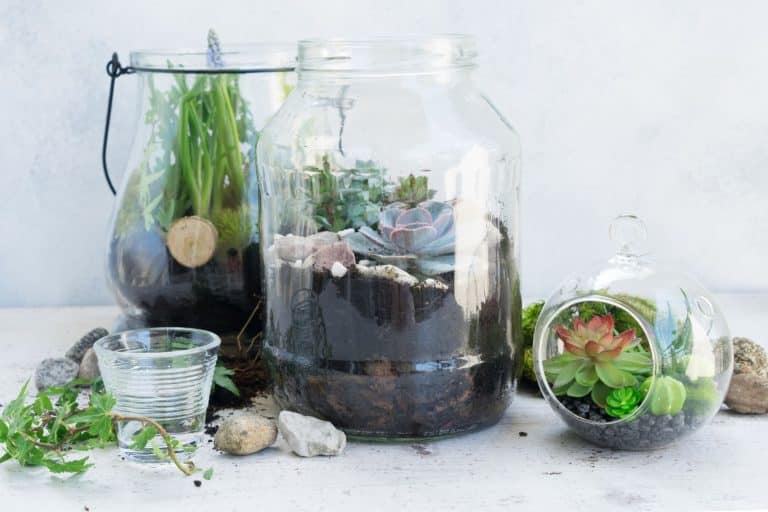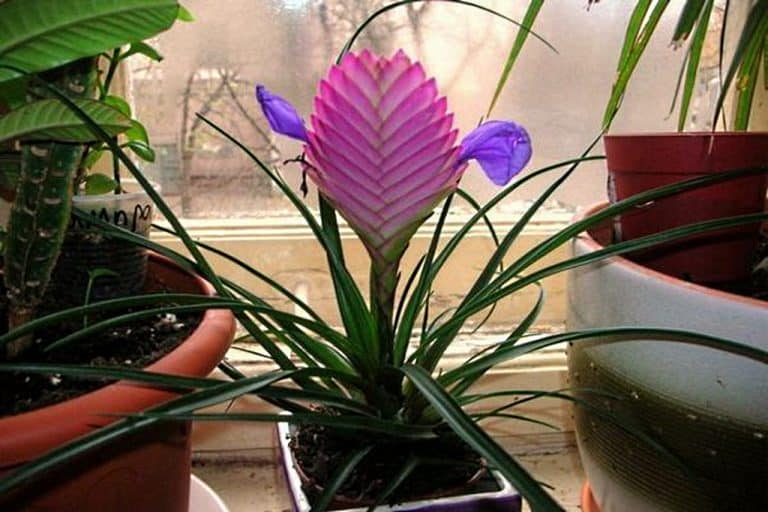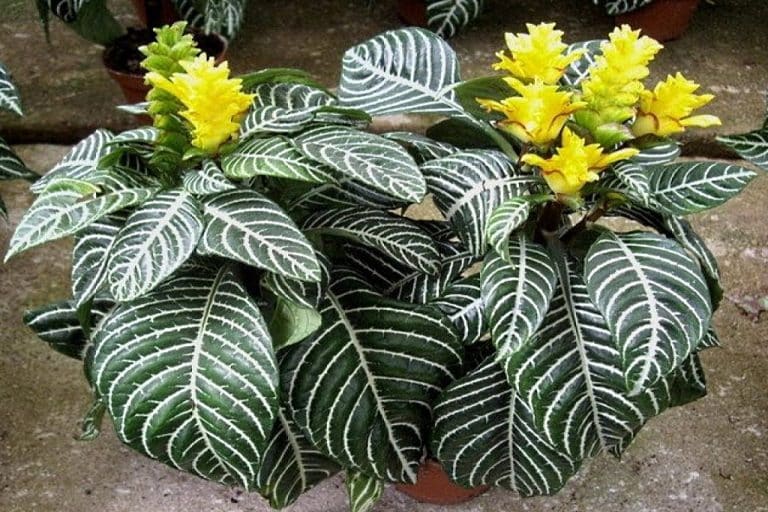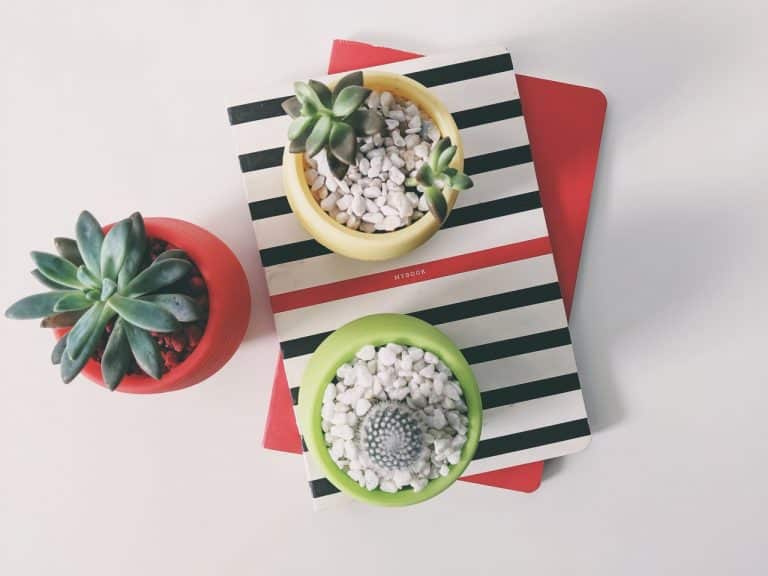The Ultimate Guide To Cultivating and Caring for the White Princess Philodendron
Do you remember the first time you saw a White Princess Philodendron?
For me, it was love at first sight. I was at my friend’s place, soaking in the fresh, oxygen-rich environment, when my eyes landed on this beauty.
Its vibrant white leaves are speckled with a unique pattern of green… Oh, it was love at first sight.
But love, as they say, isn’t always easy, right?
I learned the hard way that the White Princess Philodendron isn’t just another green heartthrob that you can add to your plant family and expect it to thrive with the same old routine.
No, it requires a tad bit more care, some extra love, and a bit of your dedicated time.
But believe me when I say this – the rewards are so worth it!
Now it’s time to spill all the knowledge I learned along the way so you can enjoy what the Philodendron White Princess has to offer.
The White Princess Philodendron: Ultimate Care Guide for Healthy Growth

Understanding the White Princess Philodendron
The White Princess Philodendron, scientifically known as Philodendron Erubescens White Princess, is a rare and stunning indoor plant that boasts white variegation on its dark green, glossy, pointy leaves.
Belonging to the Araceae family, this visually striking tropical plant is native to the rainforests of Central and South America, where it thrives in the lush, humid environment.
What sets the White Princess Philodendron apart from other plants.
Imagine glossy, dark green leaves. Got it? Now, add some random white variegation to those leaves.
Gorgeous, right?
This particular variety of Philodendron is admired for its unique appearance and the fascinating contrast it creates with its white blotches against the rich green foliage.
A plant this stunning surely needs some special care, right?
Well, the White Princess Philodendron loves bright, indirect sunlight.
A word of caution here – don’t expose her to intense direct sunlight, as it can cause her leafy finery to scorch.
Being a self-heading plant, this Princess stands tall, with a potential height of up to 3 feet!
To give her the royal treatment she deserves, remember the magic trio – right lighting, perfect temperature (between 65 and 80°F or 18-27°C), and well-draining soil.
Keeping these in mind will ensure she stays healthy and gorgeous.
Here’s an interesting fact: in its natural habitat, this plant is usually found in the rainforest understory, soaking up the dappled sunlight filtering through the canopy above
The best spot is near east or southeast-facing windows work wonders to mimic the dappled sunlight of the rainforest home.
Don’t forget, its used to the high humidity levels of the tropics – so keep that spritz bottle handy!
Light and Temperature Requirements
The White Princess, thrives best in bright, indirect sunlight.
Since these plants originate from tropical rainforests, they are accustomed to growing under the forest canopy, receiving filtered light.
Thus, positioning them near an east-facing window would be ideal, ensuring they receive sufficient light without being exposed to harsh direct rays.
When it comes to temperature, these philodendrons prefer a range between 64.4 – 73.4° Fahrenheit (18 – 23° Celsius).
As indoor plants, they grow well in a consistent, comfortable environment without abrupt temperature fluctuations.
Maintaining a stable temperature is essential to encourage healthy growth and preserve the characteristic variegation on the leaves.
Humidity is another crucial factor for the White Princess Philodendron. High humidity helps in maintaining the lush green foliage and vibrant variegation patterns.
To increase indoor humidity, either place a humidity tray under the plant or group it with other houseplants, which will naturally elevate humidity levels.

Watering and Humidity Needs
White Princess Philodendron has specific watering and humidity preferences that significantly contribute to its growth and overall health.
To ensure its proper care, always maintain a consistent watering schedule and attention to ambient humidity.
Overwatering might lead to a Problem known as root rot, the plant-world equivalent of a tummy ache!
So water the White Princess Philodendron once a week, allowing the top inch of the soil to dry out between waterings.
To prevent root rot, use a well-draining potting mix made of peat moss, perlite, coco coir, and sphagnum moss.
To avoid this, let’s get creative with the potting mix.
A mix of peat moss, perlite, coco coir, and sphagnum moss is like a buffet for this Princess plant.
It ensures adequate moisture while promoting proper drainage.
If you’re like me, you might have tried your hand at plant propagation.
It’s kind of like cloning your favorite plant, and the White Princess Philodendron is no exception.
You can do this by using stem cuttings with something called aerial roots – unique little straws that suck up water and nutrients.
Pick a healthy stem cutting with at least one or two aerial roots, and you’ve got a higher chance of propagating successfully.
The surroundings has to be humid, about 60% to be precise.
But don’t forget to keep the air circulating to avoid any unwanted plant diseases.
You can use a humidifier, a tray with water and pebbles under the pot (never let the pot sit in the water), and even misting the leaves with distilled water can help create this tropical haven.
The recipe for a thriving White Princess Philodendron involves
- regular watering,
- well-draining soil, and
- a suitable humidity level.
Fertilizing the White Princess Philodendron
The White Princess Philodendron is like the royal cousin of the popular Philodendron Pink Princess, and quite a looker too, with its variegated foliage.
Use a balanced liquid fertilizer once a month from spring to fall ; the Princess’s growing season.
Don’t forget to dilute it as per the instructions; we don’t want to spoil the roots with an over-rich diet.
Remember, it’s like seasoning – a sprinkle here and there, but don’t drown
Over-fertilizing could turn the distinct white coloration into a common green.
And we definitely wouldn’t want to take the ‘White’ out of the White Princess, philodendron right?
Now, if you’re thinking, “I don’t want to rely solely on fertilizer,” you’re on the right track!
You have the option to Spruce up the soil mix with some nutrient-rich ingredients like sphagnum moss, coco coir, or worm castings.
All in all, remember this simple rule when it comes to fertilization; Consistency and moderation!
Just like us, our plant buddies appreciate a balanced diet to stay healthy and flourish.
Propagation Techniques
White Princess Philodendron is a highly sought-after plant due to its unique appearance and growth habit.
Now Let’s break down the process of creating a clone from your White Princess Philodendron. Propagation!
First things first, locate a node on the stem of your White Princess – a node looks like a tiny joint or bump.
This is crucial, as it’s the place where new roots will emerge. With utmost care, snip the stem there, and voila! You have a stem cutting.
Next up, place this precious cutting in a glass of water. Now, the waiting game begins. As days turn into weeks, tiny roots will start forming from that node.
The magic moment to move to the next step is when these roots are about an inch long.
While you’re nurturing this little one, make sure the plant is getting the care it needs, especially when it comes to watering.
To speed up your Philodendron White Princess’s growth, consider mixing in some worm castings into your potting mix. These nutrient-rich castings are like vitamins for your plant, promoting healthy and faster growth.
Don’t let the roots swim in water all day, this could cause root rot.
Instead, try dunking the entire pot in a bucket of water, let it soak up some water, then lift it out to drain.
It’s like a quick splash, not a marathon swim session.
So, to sum up: propagation of your White Princess Philodendron involves a few easy steps –
- snipping a stem cutting,
- patiently waiting for roots to form,
- carefully watering, and adding some worm castings for that extra nutrient boost.
Soil and Potting
Straight out of South America’s lush greenscape, the White Princess Philodendron is truly a marvel.
Those dark green leaves, sprinkled with the most fascinating white blotches.
it’s like each leaf is an artwork!
When it comes to soil and potting, this plant isn’t too picky about soil.
It’s like the chill friend in your group who is okay with any place you pick for dinner.
Just like them, this Philodendron gets comfy in most soils typically used for its relatives.
But the secret to really getting it to flourish is all about the mix.
One that drains well but doesn’t say goodbye to all the moisture.
A tip from one plant lover to another; try the aroid soil mix.
It’s perfect for your Philodendron’s roots, with the right drainage and nutrients.
When it comes to potting, oh boy, here’s where you need to be a bit careful!
You know how we don’t like to have our feet soaked in water all the time?
Same goes for this Philodendron.
Make sure you have a pot with enough drainage holes.
As for watering, here’s a personal hack… wait until the topsoil is as dry as a biscuit before you water it again. And, if possible, use filtered or distilled water. Your plant will thank you for it!
Did you know these Philodendrons love to chill in temperatures between 65°F and 85°F? And they absolutely bask in high humidity, preferably above 60%.
It’s like they’re forever on a tropical vacation!
Now, the White Princess Philodendron is quite the diva, but it also has a tough side. You see, it contains calcium oxalate crystals, which can be a bit of a bother if ingested.
So, if you have kids or pets who might find it snack-worthy, better to keep it out of their reach.
So, if you want a flourishing White Princess Philodendron in your indoor garden, just remember these things:
Get the soil right, pot it properly, and respect its space.
Common Pests and Diseases
Let’s talk about something we all hate – pests!
And no, I’m not talking about annoying neighbors.
Im referring to pest.
Ive noticed Aphids, mealybugs, scales, and spider mites having a field day on my White Princess Philodendron!
These little critters can take a toll on the plant’s health and cause leaf damage.
Remember, a quick look-over your plant every now and then goes a long way in catching these party poopers early.
And if you spot them, you can get rid of them with insecticidal soap or neem oil.
Apart from these uninvited guests, our Philodendron can sometimes have a hard day due to poor care.
Leaf spot, blight, rot, yellow leaves, And overwatering is often the culprit causing root rot.
A rule of thumb I learned the hard way: always use pots with good drainage and never leave the plant sitting in water. Trust me, a pebble tray can be your best friend to keep overwatering in check.
And if you ever notice your Philodendron’s leaves turning yellow? It might be throwing shade at you for the excess sunlight.
This beauty likes its sunlight like its morning coffee – bright but indirect, to avoid leaf scorch. And when you see damaged or yellow leaves, prune them off.
Wrapping Up with Aftercare and Maintenance Tips
Nurturing a White Princess Philodendron, is like cultivating a relationship with an old friend, isn’t it?
Here are some tips to help it thrive…
Imagine fertilizer as the equivalent of your monthly catch-ups over coffee. A balanced liquid fertilizer served up once a month during its growing season is like a hearty chat for the Philodendron, pumping it with all the nutrients its spectacular, variegated leaves crave.
However, when winter rolls around, our friend tends to hit the snooze button, growing a tad slower.
That’s the perfect time to dial back the “coffee catch-ups” to every other month.
Moving on to the Philodendron’s living space, you’d want your pal to live comfortably, wouldn’t you?
The same goes for your plant.
A repotting session every two to three years or when its roots seem too crammed, is akin to offering your friend a roomier apartment.
And as the Philodendron matures, it might need a bigger “apartment” to accommodate its growing root system.
Remember, the soil should drain well yet hold some moisture – too much water and our green friend might get soggy feet!
Although the White Princess Philodendron is not known for showy flowers, it’s the foliage that gets the standing ovations.
Keeping those leaves vibrant and eye-catching requires the perfect mix of light, water, and temperature conditions.
It’s a bit like ensuring it’s ready to take center stage, day in and day out!
To sum it all up, the perfect recipe for a healthy and happy White Princess Philodendron involves regular fertilization, timely repotting, and attentive care, tailored to its unique needs. ?
Frequently Asked Questions
Do all white princess philodendrons have pink?
No, not all White Princess Philodendron plants have pink on their leaves. The variegation on the leaves can range from bright white to a soft pink hue. The intensity of the pink color may vary from plant to plant and can be influenced by factors such as light exposure and overall plant health.
Is White Princess rare?
Yes, the White Princess Philodendron is considered a rare and sought-after plant among plant enthusiasts. Its unique variegated foliage and self-heading growth habit make it a desirable addition to indoor plant collections.
White Princess vs White Knight?
Both White Princess and White Knight Philodendrons are rare and sought after for their unique variegated foliage. White Princess has green leaves with white variegation, while the White Knight has green leaves with cream or yellow variegation. Additionally, White Princess is a self-heading plant, whereas White Knight is a climbing plant that requires support to grow.
White Princess for sale?
Due to its rarity, White Princess Philodendrons can be difficult to find for sale. Some specialized online plant shops and local nurseries may occasionally stock this plant. Be prepared to pay a premium price for this sought-after plant.
White Princess yellow leaves?
Yellow leaves on a White Princess Philodendron can be a sign of a few issues such as overwatering, underwatering, or inadequate light levels. To address this problem, ensure you provide the plant with proper care, including well-draining soil, appropriate positioning in indirect light, and a consistent watering schedule.
White vs Pink Princess?
The primary difference between the White and Pink Princess Philodendrons lies in their variegation patterns. White Princess has green leaves with white variegation, while Pink Princess boasts green leaves with pink and sometimes white variegation. Both plants require similar care, and both are highly sought after by plant enthusiasts for their stunning foliag

